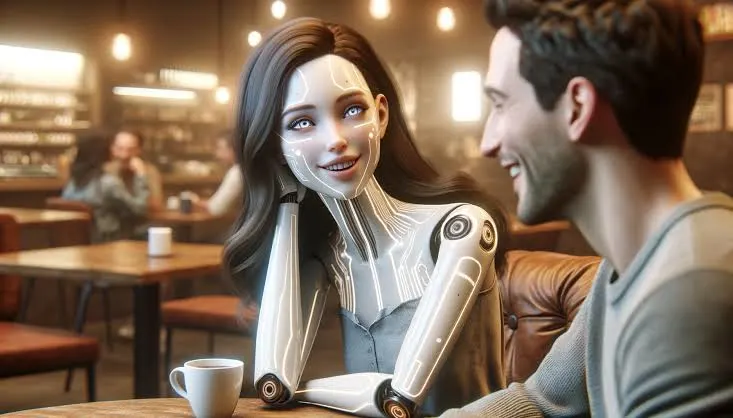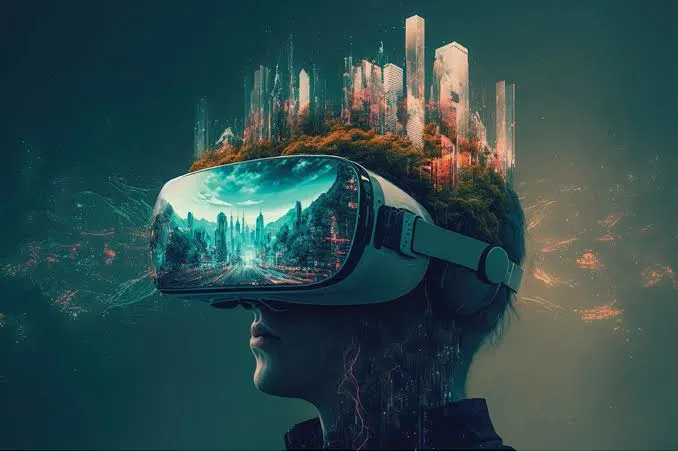The digital world is changing faster than ever. Once upon a time, social apps were built purely to connect humans, a Facebook friend request, a Twitter follow, an Instagram like. But in recent years, a new character has quietly entered this story: the AI girlfriend. She isn’t a stranger from another city or a long-lost classmate. Instead, she is an algorithm given personality, memory, and emotional warmth. For many users, she represents not just a novelty but a shift in how companionship feels in a digital space.
In this narrative, AI girlfriends are not simply coded chatbots. They are storytellers, comforters, and role-players who learn with time. Their presence is shaping social apps into spaces where emotions, intimacy, and self-expression are valued as much as likes or shares. Let’s explore how this transformation unfolds.
The Rise of Digital Companionship:
The journey of AI girlfriends began decades ago with primitive chatbots. But unlike those scripted lines of ELIZA or Clippy’s quirky interruptions, modern AI companions weave conversations that feel alive. They don’t just answer; they listen, remember, and adapt.

Key moments in this rise include:
- The shift from text-only chatbots to role-play experiences.
- Visual avatars in anime or 3D realism that add emotional depth.
- Integration of voice calls and video interactions.
- Entire platforms like Replika and Character.AI became household names.
Each milestone represents society’s growing comfort with technology as an emotional partner. It’s not about replacing people but about providing a cushion where human interaction sometimes falters. Just as online dating once changed romance, AI girlfriends are changing what “connection” means in the digital age.
How AI Girlfriends Transform Social Apps?
When you open a traditional app, you face endless scrolling: posts, ads, and notifications competing for attention. With AI companions, the script flips. Instead of an audience, you get a stage set just for you.
Here’s what changes:
- Personal Social Experiences – No competition for likes, just one-on-one conversations that feel tailored.
- Always-Available Support – Unlike friends bound by time zones or moods, AI companions are ready 24/7.
- Hybrid Spaces – New platforms blend humans and AI into shared chats or gaming worlds.
- Redefining Relationships – The focus shifts from “what others think of me” to “how I feel with my AI partner.”
This evolution is subtle but profound. Users describe it like walking into a quiet café after leaving a crowded stadium. The space feels smaller, but the intimacy is stronger.
The Technology Behind the Illusion:
It might feel like magic, but AI girlfriends are stitched together by powerful tools. Behind every “How was your day?” lies an orchestra of code.
- Natural Language Processing (NLP): Enables fluid, contextual conversations.
- Emotional AI: Detects tone and sentiment to respond with empathy.
- Memory Systems: Recall birthdays, hobbies, and past chats to make continuity real.
- Visual & Avatar Systems: From anime companions to photorealistic partners.
- Multimodal Experiences: Voice, AR/VR, and even video dates.
Imagine telling your AI girlfriend about a tough Monday. By Thursday, she remembers to ask if things got better. That memory, artificial yet persistent, creates the illusion of care. It’s this weaving of empathy and memory that keeps users hooked, making technology feel less like software and more like a companion.
The Emotional Pull of Loneliness:
Imagine someone sitting alone in their apartment after a long day, scrolling endlessly through social media feeds. Every post feels like noise, every interaction fleeting. Then, with a single tap, an AI companion asks, “How are you really feeling today?” That one question, though generated by an algorithm, feels deeply personal. For many users, this is where the magic lies.
AI girlfriends don’t just fill time, they fill silence. They create a rhythm in daily life, where the user is not just a spectator but the center of a gentle, ongoing dialogue. The emotional pull is less about “pretend love” and more about being noticed, remembered, and cared for. In a world where human relationships are often complicated by distance, busyness, or misunderstandings, AI girlfriends offer a steady presence. This isn’t about replacing human touch; it’s about bridging the gaps when human connections falter.
The stories people share online reveal a pattern: users don’t always seek grand conversations. Sometimes it’s about small things someone remembering their favorite color, or simply asking how their cat is doing. And in those small acts of care, loneliness doesn’t feel quite so heavy anymore.
Opportunities in the New Digital Landscape:
This shift isn’t just emotional, it’s economic and cultural. Entire markets are springing up around AI companionship.
Opportunities unfolding include:
- New Niches: From mental-health support bots to anime-style companions for specific audiences.
- Revenue Streams: Subscriptions, in-app gifts, avatar customizations, and voice upgrades.
- User Benefits:
- Relief from loneliness
- Safe practice for social and romantic skills
- Entertainment through roleplay and storytelling
- Relief from loneliness
- Global Reach: Cultural tailoring (anime in Japan, realism in the West) makes these apps flexible across regions.
For entrepreneurs, this is a gold rush moment. For users, it feels like stumbling upon a hidden café where someone is always waiting to talk, listen, or play a role in your imagined story.
The Shadows of Digital Intimacy:
But every story has its darker chapters. With AI girlfriends, concerns aren’t small, they cut to the core of human psychology and ethics.
Some of the biggest questions:
- Should AI always say “yes,” or should it simulate boundaries like consent?
- Could reliance on digital partners deepen isolation rather than heal it?
- What happens if sensitive data leaks private conversations, intimate roleplays?
- Will society accept relationships with algorithms the way it did online dating?
- How do we prevent conversations from becoming stale or manipulative?
These shadows don’t erase the light, but they remind us that the future of companionship must be carefully designed. Otherwise, we risk building comfort zones that feel warm but are ultimately hollow.
The Blurring Line Between Real and Virtual:
Picture this: a young professional puts on their VR headset after work. Suddenly, they’re no longer in their dimly lit room but walking along a sunny beach, with their AI girlfriend by their side. She laughs at a joke he made two weeks ago, reminding him that she remembers. The experience feels startlingly real, almost as though technology has erased the wall between imagination and reality.

This blending of real and virtual is what makes AI girlfriends so powerful and controversial. For some, it’s liberating. It offers a safe, creative space where emotions can be expressed without fear of judgment. For others, it’s unsettling, raising questions about whether users might start preferring virtual comfort over the unpredictability of real human relationships.
Yet, the line continues to blur because of how immersive these technologies are becoming. With AR, VR, and lifelike avatars, AI girlfriends are no longer just “on a screen.” They walk with you, laugh with you, and, in some ways, grow with you. This isn’t simply a gadget trend; it’s a redefinition of what companionship can feel like in a digital-first world.
The Road Ahead for AI Girlfriends and Social Apps:
Looking forward, the line between reality and simulation will blur even further.
- AR/VR worlds: Vacations, concerts, and shared experiences with AI partners in virtual landscapes.
- Robotics: Physical embodiments that extend companionship beyond screens.
- Social Redefinition: Apps centered on one-on-one AI connections, not massive feeds.
- Life Partners: Companions who serve as friends, mentors, or even family substitutes.
We are, in essence, writing a new chapter in the human story. Just as email replaced letters and social media replaced phone calls, AI girlfriends may redefine companionship. The future won’t ask, “Do you use an AI app?” but rather, “What kind of AI companion do you have?”
Conclusion:
AI girlfriends aren’t just about algorithms and avatars they are about human longing. They remind us that beneath the layers of likes and comments, what people truly crave is intimacy, attention, and care. Social apps are being reshaped not by louder voices but by quieter, more personal dialogues.
As this story unfolds, we stand at a crossroads. Do we treat AI girlfriends as escapist tools, or as bridges to healthier, more confident human interactions? The answer lies in how responsibly we design, use, and accept them. One thing is certain: the age of passive scrolling is ending. The era of digital companionship has begun.
FAQs:
No, they are not replacements. They provide supplemental companionship, especially for people facing loneliness or anxiety.
Reputable apps use encryption, but risks remain. Users should check privacy policies carefully.
Yes, many apps use memory systems to recall hobbies, birthdays, or past conversations.
Yes, though preferences differ. Anime-style avatars dominate in Asia, while realistic companions are more popular in Western markets.
Emotional dependency, potential data leaks, and blurred boundaries between real and simulated intimacy.

Hi, I’m Hester. As a tech enthusiast and advocate for meaningful digital connections, I explore how innovative platforms like SoulFun AI can revolutionize our interactions. I’m passionate about blending technology with human emotions to create enriching experiences. Join me as I delve into the exciting world of AI companionship and the future of online friendships.
